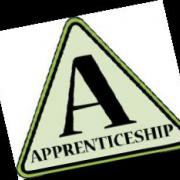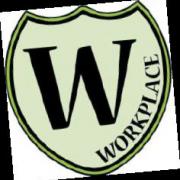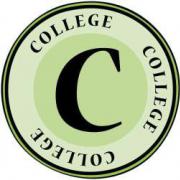Post-Secondary Destinations
 |
|
|
|
APPRENTICESHIP Skilled trades play an important role in our economy and our society. Think about it — the sector touches almost every aspect of our lives, from the homes we live in, to the cars we drive, to the food we eat. With over 130 careers to choose from, the skilled trades sector truly does offer something for everyone. Skilled tradespeople are in demand all across the country, and the demand is growing. Not only are there going to be a lot of job opportunities, but people in skilled trades get paid well, too! In fact, as an apprentice, you can start making money right away because you “earn while you learn”. An apprenticeship is a hands-on training program for people who want to work in a skilled trade and enjoy learning by doing. About 90% of the training is on the job, under the supervision of a licensed journeyman. The rest of the time is spent learning in the classroom. Depending on the trade, an apprenticeship lasts from two to fi ve years. After the completion of their apprenticeship, apprentices write an exam to qualify for a Certificate of Qualification. You can even get a head start on your apprenticeship while you’re in high school. The Ontario Youth Apprenticeship Program (OYAP) is a course you can take in Grade 11 or 12 to learn a skilled trade and begin registering your apprenticeship hours, while earning credits toward your |
|
|
WORKPLACE Many opportunities exist for people who decide to go right to work after high school, and there are lots of options for you to think about. Most employers are looking for certain “essential skills”. Depending on the job, those skills might include reading, writing, computer use, money math, decision making, problem solving, or measurement and calculation. You will also have a better chance of getting a good job if you can show that you have good work habits, such as working safely, teamwork, reliability, initiative, customer service, and entrepreneurship. During high school, you can get ready for the world of work through cooperative education, youth apprenticeship opportunities and volunteer experiences. If you’re thinking about going right to work after high school, talk to your guidance counsellor about how you can get ready. Even after you finish high school, you continue to learn. The more you’re willing to learn, you’re more likely to succeed at work, at home and in your community. There are lots of ways to continue learning. Self-study programs, on-the-job training, part-time courses and online learning are all great ways for you to develop your skills and knowledge if you go directly to work after high school. |
|
|
UNIVERSITY Universities offer undergraduate degrees (bachelor), professional degrees (eg. MD, LLB), and graduate degrees (master’s and doctorate.) Students can often combine programs to complete, for example, a degree in two subject areas such as chemistry and physics, English and history, or environmental studies and geography. Some universities and colleges of applied arts and technology have joint programs that let students earn a university degree and a college diploma simultaneously. Most undergraduate degree programs are three or four years in length. The basic requirement for admission is 6 “U” or “U/C” (M) courses. Most programs have specifi c subject requirements and some universities require a minimum number of “U” courses. See individual university calendars for the requirements for specific programs. Some programs are more competitive than others and require higher grade averages for admission. Admission decisions are based on grades, although some programs/universities require supplemental information, portfolios, or auditions for admission. |
|
|
COLLEGE Ontario’s colleges provide students with the opportunity to develop the skills that can lead to rewarding careers in business, applied arts, technology, and health sciences. Colleges offer a variety of full- and part-time career-oriented programs for secondary school graduates and for mature students who may not have completed secondary school. Most college programs are either diploma programs (which may be either two or three years in length) or certificate programs (which run one year or less). Some courses of study lead to official certification in skilled trades that are regulated by professional associations. In addition, many colleges offer programs of study leading to bachelor degrees in applied areas of study. There are co-op options available in several programs. Almost all programs require an Ontario Secondary School Diploma, with Grade 12 English at the “C”, “U/C”or “U” level. Some programs also require senior mathematics and science “C”, “U/C”, or “U”. Check individual colleges and programs to determine the specifi c prerequisites for the program of your choice. Admission decisions are usually based on grades, and sometimes questionnaire completion and attendance at information sessions. Some program areas, such as health, human services and media, are more competitive than others. |











